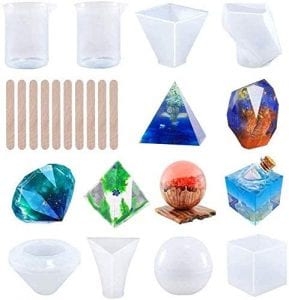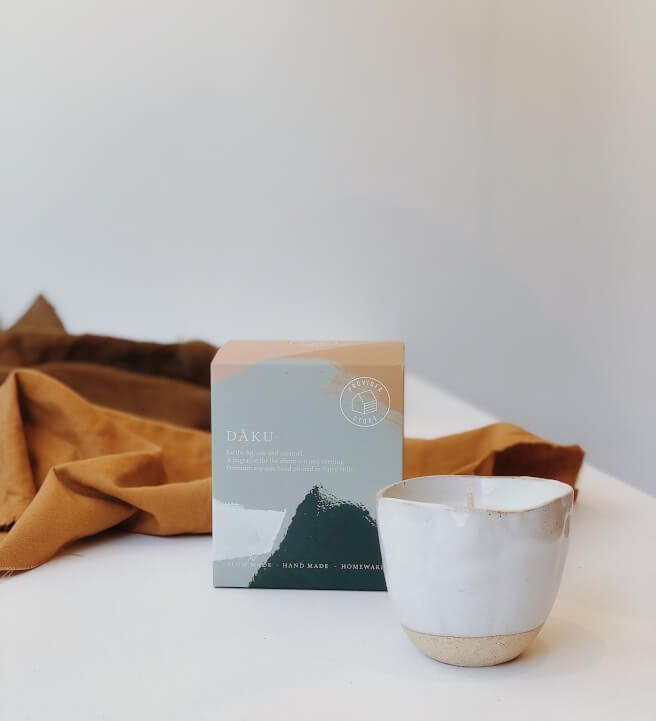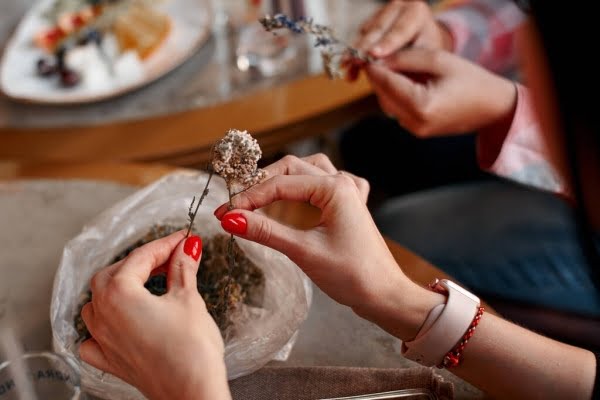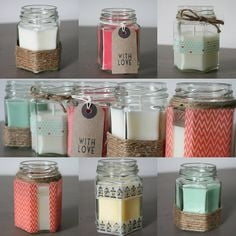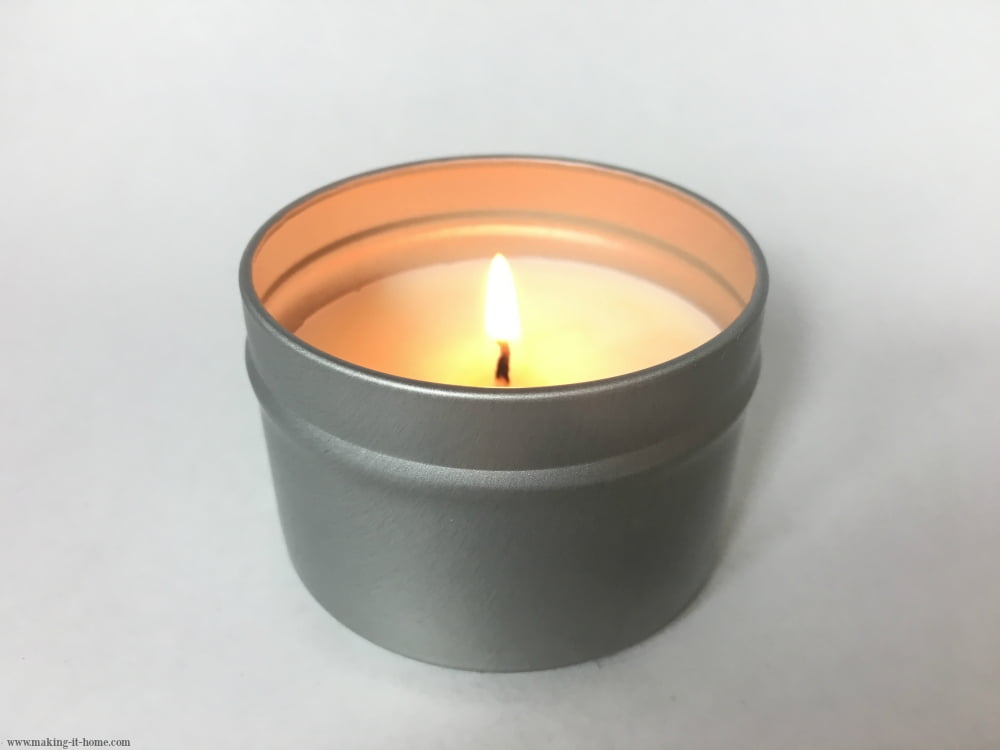Are you looking to elevate your candle-making game? Look no further than the timeless technique of using a wooden mold for candle making. Whether you are a seasoned artisan or just starting out, this traditional method offers numerous benefits and endless creative possibilities. In this article, we will explore the fascinating world of candle making with wooden molds, from its historical origins to practical tips and techniques for successful candle crafting.
Candle making has been an integral part of human history for centuries, and the use of wooden molds dates back to ancient civilizations. We’ll delve into the rich history of candle making, exploring the traditional methods and materials used in crafting these essential light sources. Understanding the historical context will provide valuable insight into the enduring appeal of using wooden molds for candle making.
Beyond its historical significance, using a wooden mold for candle making offers a range of benefits that make it a preferred choice among crafters and artisans. From creating custom shapes and sizes to achieving a beautiful rustic finish, wooden molds add a unique touch to handmade candles. We will uncover the many advantages of using wooden molds and how they contribute to the overall quality and aesthetic appeal of homemade candles.
History of Candle Making
Candle making has a long and rich history, dating back to ancient times when candles were primarily made from animal fat or beeswax. The earliest known examples of candles were found in Egypt and date back to around 3000 BC. These early candles were made by dipping papyrus reeds into melted tallow or beeswax, creating a primitive but effective source of light.
Over time, the methods and materials used for candle making evolved, with different cultures developing their own unique techniques. In medieval Europe, for example, tallow (rendered animal fat) was the most common material used for candle making due to its abundance and low cost. The introduction of beeswax candles by the Roman Catholic Church in the Middle Ages marked a significant advancement in candle making, as they burned cleaner and longer than tallow candles.
In the 18th century, the discovery of spermaceti wax from sperm whales led to the production of high-quality candles that burned brighter and longer than any previous materials. However, this soon fell out of favor due to environmental concerns and the decline of whaling.
The Industrial Revolution brought about further advancements in candle making with the introduction of stearin and paraffin wax, which are still commonly used today. Despite these advancements, traditional methods and materials such as beeswax and tallow have remained popular among craftspeople who appreciate their natural qualities and historical significance.
The use of wooden molds for candle making also has a historical basis, with wooden molds being commonly used prior to the invention of metal or silicone molds. Wooden molds offer a traditional charm that many artisanal candle makers appreciate, adding to the nostalgic appeal of crafting handmade candles using time-honored methods. Today, modern candle makers continue to embrace traditional techniques while also incorporating contemporary innovations for greater efficiency and creativity in their craft.
Benefits of Using Wooden Molds for Candle Making
Wooden molds have been a staple in candle making for centuries, and for good reason. There are numerous benefits to using wooden molds for candle making, which have made them a popular choice among candle enthusiasts. Here are some of the key benefits:
- Natural Insulation: Wooden molds provide natural insulation, which helps candles cool and solidify at a slower and more even pace. This can result in a smoother finish and reduce the likelihood of air pockets forming inside the candle.
- Durability: Wooden molds are known for their durability and longevity. With proper care and maintenance, they can last for years, making them a sustainable option for candle making.
- Customization: Wooden molds come in a variety of shapes and sizes, allowing for endless customization options when it comes to the final look of the candles.
In addition to these benefits, using wooden molds can also add a rustic charm to the candles, giving them a unique and timeless appeal.
Moreover, the use of wooden molds is also environmentally friendly as it reduces the need for disposable or single-use molds that contribute to waste. By investing in high-quality wooden molds, candle makers can contribute to sustainable practices within the industry.
Overall, the benefits of using wooden molds for candle making make them an attractive option for both beginner and experienced candle makers alike. Their natural insulation properties, durability, customization options, and environmental sustainability all make them a valuable tool in the art of candle making. Whether you’re creating candles as a hobby or profession, wooden molds offer numerous advantages that enhance the overall candle-making experience.
Types of Wooden Molds Available
When it comes to candle making, the type of mold you use can greatly affect the outcome of your candles. Wooden molds are a popular choice for many candle makers due to their durability and versatility. There is a wide variety of wooden molds available on the market, each with its own unique features and benefits.
One common type of wooden mold is the traditional pillar mold, which is used to create cylindrical or rectangular-shaped candles. These molds are often made from high-quality pine or cedar wood, which helps to insulate the wax as it cools and solidifies. This results in a smooth and even finish on the final candle.
Another popular option is the votive mold, which is used to create small, cylindrical candles commonly known as votives. These molds come in various sizes to accommodate different candle diameters and can be reused multiple times with proper care and maintenance.
In addition to standard shapes like pillars and votives, there are also specialty wooden molds available for more unique candle designs. For example, you can find wooden molds in the shape of stars, hearts, flowers, and other decorative motifs. These specialty molds allow for endless creativity when it comes to customizing your candles.
Overall, the variety of wooden molds available offers candle makers the flexibility to experiment with different shapes and sizes, making it possible to create one-of-a-kind candles that stand out from the rest.
| Type of Wooden Mold | Description |
|---|---|
| Pillar Mold | Used for creating cylindrical or rectangular-shaped candles |
| Votive Mold | Designed for making small cylindrical votive candles |
| Specialty Mold | Available in various decorative shapes such as stars, hearts, flowers |
Step-by-Step Guide to Using a Wooden Mold for Candle Making
When using a wooden mold for candle making, it’s important to follow a step-by-step process to ensure the best results. Here are some tips and instructions for using a wooden mold for making candles.
Step 1: Preparing the Wooden Mold
Before you begin, make sure your wooden mold is clean and dry. You can also lightly coat the inside of the mold with a non-stick spray or vegetable oil to make it easier to remove the finished candle.
Step 2: Assembling the Wick and Wick Holder
Next, you’ll need to assemble the wick and secure it in place using a wick holder at the center of the mold. Make sure the wick is straight and centered to ensure an even burn when the candle is lit.
Step 3: Melting and Pouring the Wax
Now it’s time to melt your wax in a double boiler or wax melting pot. Once melted, carefully pour the wax into the prepared wooden mold, being careful not to disturb the wick. Fill the mold almost to the top, leaving some space for trimming later.
Step 4: Cooling and Trimming
Allow the wax to cool and solidify completely before removing it from the mold. Once cooled, trim any excess wax from the top of the candle, then carefully remove it from the wooden mold. Your beautifully crafted candle is now ready to use or customize.
By following these simple steps, you can create unique and beautiful candles using a wooden mold. Enjoy experimenting with different shapes and sizes to add your own personal touch to your homemade candles.
Tips and Tricks for Successful Candle Making With Wooden Molds
Candle making with wooden molds can be a fun and rewarding hobby, but it does require some know-how to ensure successful results. Here are some tips and tricks to help you achieve the best outcome when using wooden molds for candle making.
Firstly, it’s important to properly prepare your wooden mold before pouring the wax. Make sure to thoroughly clean and dry the inside of the mold to remove any dust or debris that could affect the finished candle. Additionally, consider using a mold release spray or oil to make it easier to remove the finished candle from the mold once it has hardened.
Another important aspect of successful candle making with wooden molds is choosing the right type of wax. Beeswax and soy wax are popular choices for use with wooden molds as they have a lower melting point, which makes them easier to work with. It’s also essential to monitor the temperature of the wax as it melts and ensure that it is not overheated, which can cause discoloration or cracking in the finished candle.
Furthermore, pay attention to the wick placement in your wooden mold. For an even burn, centering the wick in the mold is crucial. You can use a wick holder or simply tape the wick in place at the top of the mold before pouring in the wax. Finally, consider experimenting with different fragrances and colors to customize your candles made in wooden molds.
| Tip | Description |
|---|---|
| Properly Prepare Your Wooden Mold | Thoroughly clean and dry the inside of the mold before pouring wax; Consider using a mold release spray or oil. |
| Choose The Right Type of Wax | Beeswax and soy wax are popular choices; Monitor temperature while melting to avoid discoloration or cracking. |
| Ensure Proper Wick Placement | Centering wick is crucial for an even burn; Use a wick holder or tape wick in place at top of mold before pouring wax. |
Maintenance and Care of Wooden Molds for Longevity
Wooden molds for candle making require proper maintenance and care in order to ensure their longevity and effectiveness. By taking the time to properly maintain your wooden molds, you can continue to create beautiful and high-quality candles for years to come. Here are some tips and guidelines for maintaining and caring for your wooden molds:
- Regular Cleaning: It is important to clean your wooden molds after each use to remove any excess wax or residue. Use a mild soap and warm water to gently scrub the inside of the mold, being careful not to scratch or damage the wood.
- Proper Drying: After cleaning, make sure the wooden mold is completely dry before using it again. Excess moisture can lead to mold or mildew growth, which can compromise the integrity of the mold.
- Storage: Store your wooden molds in a cool, dry place away from direct sunlight. This will help prevent warping or cracking of the wood over time.
In addition to regular maintenance, it is important to periodically treat your wooden molds with oil or wax to keep them in good condition. This helps protect the wood from drying out and becoming brittle. Beeswax or mineral oil are commonly used for treating wooden molds, as they are safe for use with candles.
Taking the time to properly care for your wooden molds will not only extend their lifespan, but also ensure that your candles continue to turn out beautifully every time you use them.
Remember that proper maintenance and care of your wooden molds is essential for preserving their quality over time. By following these simple guidelines, you can enjoy using your wooden molds for candle making for many years to come.
Creative Ideas for Customizing Candles Made With Wooden Molds
When it comes to candle making, using wooden molds offers a wide range of creative possibilities for customizing your candles. Whether you are making candles for personal use, gifts, or to sell, the ability to customize and personalize your creations adds a special touch that can set them apart. From choosing the type of wax and fragrance to adding decorative elements, there are many ways to make your wooden mold candles unique.
One of the most popular ways to customize candles made with wooden molds is by adding color. While traditional beeswax candles have a natural, ivory color, using dyes or pigments allows you to create candles in a rainbow of colors. Whether you prefer bold and bright hues or soft and subtle shades, experimenting with different colors can add a visually stunning element to your candles.
In addition to adding color, you can also incorporate various textures and patterns into your wooden mold candles. This can be achieved by embedding decorative elements such as dried flowers, herbs, or even small decorative objects into the wax before it sets.
Another option is to use textured molds that create unique patterns on the surface of the candle. From intricate designs to simple yet elegant textures, adding visual interest through texture can enhance the overall aesthetic appeal of your candles.
Furthermore, you can add a personal touch to your wooden mold candles by customizing their shape and size. Wooden molds come in a variety of shapes and sizes, allowing you to create pillars, tapers, votives, and even novelty-shaped candles such as hearts or stars.
By choosing molds that reflect your personal style or fit the theme of a special occasion, you can produce one-of-a-kind candles that make a statement. Whether you prefer classic silhouettes or unconventional shapes, the versatility of wooden molds enables you to bring your creative vision to life in candle form.
Conclusion
In conclusion, the use of wooden molds for candle making has stood the test of time, providing a timeless appeal to this traditional craft. From the historical significance of candle making to the numerous benefits of using wooden molds, it is clear that this method has proven to be effective and enduring. The versatility of wooden molds, offering different shapes and sizes for customization, opens up endless creative possibilities for candle makers.
Furthermore, the step-by-step guide and expert tips provided in this article demonstrate that with a little patience and practice, anyone can create beautiful candles using wooden molds. The maintenance and care tips outlined here ensure that these molds can withstand frequent use and last for many batches of candles to come. Additionally, the ability to customize candles made with wooden molds allows for endless creativity and personalization, making them perfect for gifts or as items for sale.
Frequently Asked Questions
What Kind of Mold Do You Use for Candles?
The most common type of mold used for candles is made of silicone. Silicone molds are flexible, durable, and easy to release the candle from once it has set. They come in a variety of shapes and sizes to create different candle designs.
How Do I Make My Own Candle Molds?
You can make your own candle molds using simple materials like silicone putty or latex rubber. By creating a mold of an existing object or sculpting your own shape, you can customize the size and design of your candles.
Can You Make a Candle in Wood?
Yes, you can make a candle in wood by carving out a cavity to hold the melted wax. This can be done by creating a hollowed-out space in a solid piece of wood and using it as a mold for the candle. Be sure to use non-toxic finishes and pay attention to fire safety when burning wooden candles.

Welcome to my candle making blog! In this blog, I will be sharing my tips and tricks for making candles. I will also be sharing some of my favorite recipes.

